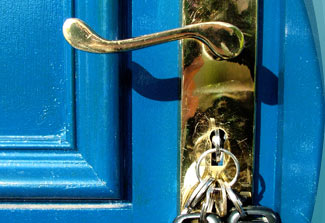Reverse mortgages on the rise
RETIRED workers are being forced to borrow against the value of their homes to cover the higher cost of living in Australia.

Reverse mortgages on the rise
RETIRED workers are being forced to borrow against the value of their homes to cover the higher cost of living in Australia.
A study by auditing firm Deloitte found that the value and number of reverse mortgages taken out in Australia had doubled over the past two years.
There are now 33,700 reverse mortgages in Australia totalling more than $2 billion in value - a rise of 34 per cent in the past year.
Deloitte partner James Hickey said that during the past year $466 million was borrowed - the majority in a lump sum, rather than an income stream.
The credit crunch has not spared the specific sector of the mortgage market, as the value of the new loans last year was down 10 per cent.
The momentum was built up in the first half of last year, before the credit crisis, as $271 million worth of new business was written - well up on the $195 million total written in the second year.
The rates on reverse mortgages are as much as 1 per cent higher than normal lending rates, and have been forecast to move higher as banks shift rates to cover funding costs.
Reverse mortgages are defined by ASIC as loans that allow cash to be borrowed against a property but on which no repayments are made until the borrower sells the property or dies. The interest and loan fees are compounded into the loan balance.
The Deloitte study found the average age of a new borrower was 72 and most loans taken out over homes were covered by a variable rate mortgage.
The number of loans is highest in NSW and people aged under 70 are taking out 40 per cent of the new loans each year.
Kieren Dell, executive director of the Senior Australians Equity Release Association of Lenders (SEQUAL), said older Australians now out of the workforce were facing cost of living restraints across the board.
"I think it's more to do with the crunch on retirees' lifestyles - we are in a high-inflation environment,'' Mr Dell said.
The average reverse mortgage loan amount has stayed relatively stable over the past two years at $60,000. However, the size of the total reverse mortgage market has grown from $848 million in 2005 to $2.02 billion last year.
The number of loans has more than doubled as well, from 16,584 to 33,741. Mr Dell said the majority of new borrowers were keen to secure additional income of just $300 a month.



